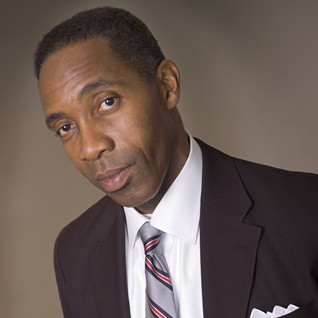In WTOP’s three-part series “Tale of a Troll,” J.J. Green delves into the inner workings of a troll house in St. Petersburg, Russia, that aimed to trick Americans on various social media platforms as part of a Kremlin-backed disinformation campaign.
WASHINGTON — On Dec. 14, 2014, Marat Mindiyarov wandered into 55 Savushkina St. in St. Petersburg, Russia, for three distinct but connected reasons.
“First of all, I was unemployed. Second, it was next to my house, and third, I was curious about what was going on inside this building,” Mindiyarov said.
He applied for a job, was hired and after a brief, eye-opening experience, he quit and started alerting friends about what he’d experienced.
In an extensive interview with WTOP, Mindiyarov detailed what he called the “Orwellian” activities that went on inside the building that housed what the U.S. Department of Justice, in court documents, called “the Internet Research Agency.”
Part two: “The Russian operation to target Hillary Clinton”
Part three: “Former Russian ‘troll factory’ worker faces retaliation; warns US ahead of midterms”
It is believed to be the hub of a Kremlin-sponsored troll operation designed to interfere in U.S. politics.
The “factory,” as Mindiyarov described it, employed more than 600 people. “It was a four-story building with 10 rooms on each floor. In each room, there were about 20 people writing,” he said.
He was employed to be one of those writers. “I was hired to make the comments on the Russian political sites,” Mindiyarov said.
He worked the day shift, from 9 a.m. to 9 p.m., which was one of two 12-hour shifts at the facility. The work was grueling.
“Because the requirements were so high,” he said, “there was no walking around. Everyone sat in front of their computers writing and writing and writing.”
“There were no jokes, no music and no social stuff — just work, work, work. Not fun at all.”
His supervisors were hostile and controlling. He said, “It was always repression and suppression from the bosses.”

Each day started with an assignment.
“In the morning,” Mindiyarov said, “you got an email with a lot of links (to internet sites) where you were supposed to post comments. They told you which topics you should comment on and how to write your comments. You just had to play with the words.”
He quickly became disenchanted.
“The job was very monotonous. There was no creativity in this job. It was very mechanical writing, because nobody cared about your opinion and thoughts. You had to follow the line, what you were told to write,” Mindiyarov said.
Soon he realized the robot-like operation was driven by a sinister motive: to promote lies.
“When you’re writing that white is black and black is white, it’s the same as what (George) Orwell wrote (in his novel, ‘1984’). It was same feeling for me. Something very strange and surrealistic was going on,” Mindiyarov said.
His instincts were correct.
Two years later, in January 2016, the U.S. intelligence community released a damning assessment that supported the claim that the Russian government had been running parts of a disinformation operation campaign at that facility.
“We assess with high confidence that Russian President Vladimir Putin ordered an influence campaign in 2016 aimed at the U.S. presidential election, the consistent goals of which were to undermine public faith in the U.S. democratic process, denigrate Secretary Clinton, and harm her electability and potential presidency,” said the assessment titled, “Assessing Russian Activities and Intentions in Recent US Elections.”
Then, on Feb. 16, 2018, in a stunning announcement, Deputy Attorney General Rod Rosenstein revealed that 13 Russian nationals and three Russian companies had been indicted by a grand jury empaneled by the special counsel investigating allegations of Russian interference.
“The defendants allegedly conducted what they called information warfare against the U.S. with the stated goal of spreading distrust toward the candidates and the political system in general,” Rosenstein said.
The sophisticated effort that began in 2014 cost millions of dollars and employed hundreds of people, he said. Many of them worked at the Internet Research Agency.
Russian oligarch Yevgeny Viktorovich Prigozhin, a close friend of Putin’s, was one of those indicted and sanctioned. He is believed to be the financier of the troll house operation.
This same facility was instrumental in an elaborate hoax inside the U.S. four years ago on Sept. 11, 2014. Citizens in St. Mary Parish, Louisiana, began receiving text message alerts at 8 a.m. regarding an explosion at a manufacturing plant. The alert read “take shelter, check local media.” The dispatch was sent from a nonexistent business called Columbia Chemical Company.
“We started getting phone calls in regards to a message titled ‘toxic fumes, hazard warning,'” said Duval Arthur, director of the Office of Homeland Security and Emergency Preparedness.
Within hours, social media platforms such as Twitter and Facebook were jammed with related messages, images of the explosion and a screenshot of a CNN homepage. Even a YouTube video had been posted showing someone watching a TV broadcast in which ISIS had allegedly claimed responsibility for an attack on the plant.
But not a word of it was true. Arthur said it was all an elaborately staged hoax.
It was all orchestrated inside the facility Mindiyarov would walk into two months later. And when Mindiyarov realized what was going on, he felt compelled to expose it.






